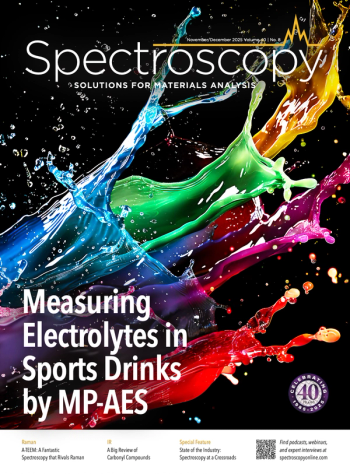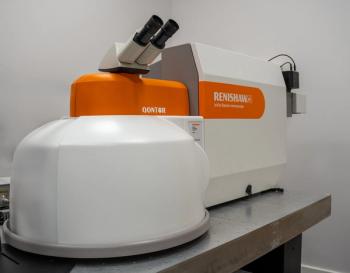
Detection of Colorless Microplastics in the Environment Using NIR Spectroscopy and Machine Learning
A recent study conducted by Shanghai researchers developed a high-accuracy model for identifying plastic pollution.
In a recent study, a research collaboration from Tongji University and the Shanghai Institute of Pollution Control and Ecological Security explored a new method for detecting plastic pollution in the environment. This novel method, which used near-infrared hyperspectral imaging (NIR-HSI) and advanced machine learning (ML) models, was designed to detect colorless fragments of microplastics, which have been overlooked by other detection methods. The findings of this study were in the Journal of Environmental Sciences (1).
Microplastics are small particles of disposed plastic that usually are 5 mm or smaller (2). Recently, there has been an increased focus to monitor and mitigate plastic waste in the environment (3). However, colorless fragments of plastic have one mostly unnoticed, and most current detection methods cannot pick up these bits of plastic.
In this study, the researchers explored using a new technique that was highly accurate, non-destructive, and able to conduct in situ detection. The research team used NIR spectroscopy to classify and identify both colored and colorless plastic fragments in complex environmental backgrounds (1). Four ML models were tested: partial least squares–discriminant analysis (PLS-DA), extreme gradient boost (XGBOOST), support vector machine (SVM), and random forest classifier (RFC). In doing so, the researchers sought to determine their efficiency in identifying plastic particles of various colors, thicknesses, and polymer types (1).
Out of the four models, PLS-DA performed the best. However, all models exhibited challenges in correctly classifying colorless plastic fragments—particularly when their thickness was below 0.1 mm—as they were often misinterpreted as part of the background (1).
A two-stage classification method was proven to be helpful in solving this challenge. Because colorless fragments are often ignored as background material, the approach first distinguishes plastic types and then re-examine it. The result was an accuracy of 99% in detecting the colorless fragments over different environmental settings (1).
Another noteworthy aspect to this study was how the method had a high-throughput detection capability. By integrating NIR-based hyperspectral imaging (HSI) with ML, Zhang’s team successfully created a rapid, non-invasive technique that can identify 15 types of macroplastics, microplastics, and rubber particles within various organic and inorganic environmental backgrounds—without requiring labor-intensive sample preparation (1).
The ability to detect both colored and colorless plastics with high precision is a major advancement in plastic pollution research. Traditional microplastic identification methods often rely on tedious extraction and purification steps, limiting their scalability (1). By eliminating these bottlenecks, this new technique paves the way for large-scale environmental monitoring programs, enabling faster and more comprehensive assessments of plastic contamination (1).
The findings in this study show that colorless plastic can be detected with high accuracy. The developed method prevents the underestimation of plastic pollution, ensuring that colorless microplastics are accurately accounted for in environmental surveys (1).
Moreover, the study’s approach could be adapted for industrial applications, such as waste sorting and recycling processes, where distinguishing different types of plastics quickly and efficiently is essential (1).
By leveraging the power of NIR hyperspectral imaging and machine learning, the new methodology developed by Zhang and his colleagues could help improve the accuracy of colorless microplastic identification. With plastic pollution continuing to threaten marine and terrestrial ecosystems, such technological advancements will play a crucial role in shaping future environmental policies and sustainability initiatives (1). This research marks a critical step toward more efficient, large-scale monitoring of plastic waste, providing a promising solution for tackling one of the world’s most persistent environmental challenges (1).
References
- Zou, H.-H.; He, P.-J.; Peng, W.; et al. Rapid Detection of Colored and Colorless Macro- and Micro-plastics in Complex Environment via Near-infrared Spectroscopy and Machine Learning. J. Environ. Sci. 2025, 147, 512–522. DOI:
10.1016/j.jes.2023.12.004 - Wetzel, W. Hidden Contaminants in Tea Bags: Using Analytical Spectroscopy to Characterize Microplastics and Nanoplastics (MNPLs). Spectroscopy. Available at:
https://www.spectroscopyonline.com/view/hidden-contaminants-in-tea-bags-using-analytical-spectroscopy-to-characterize-microplastics-and-nanoplastics-mnpls- (accessed 2025-02-03). - Wetzel, W. Reviewing the Impact of 2D-COS on Analyzing Microplastic Impact on the Environment. Spectroscopy. Available at:
https://www.spectroscopyonline.com/view/reviewing-the-impact-of-2d-cos-on-analyzing-microplastic-impact-on-the-environment (accessed 2025-02-03).
Newsletter
Get essential updates on the latest spectroscopy technologies, regulatory standards, and best practices—subscribe today to Spectroscopy.



